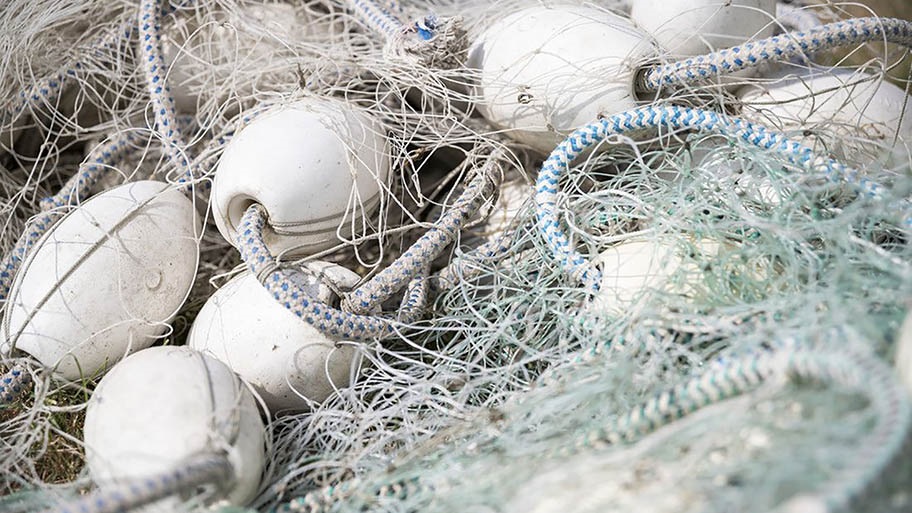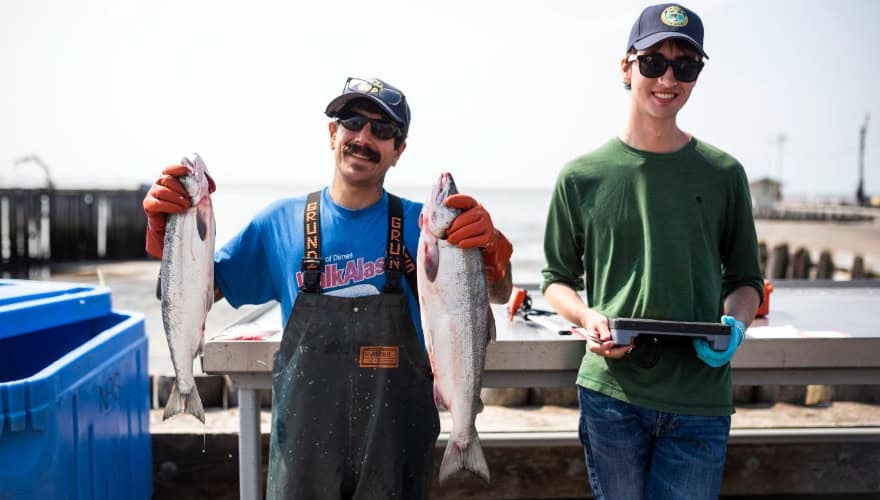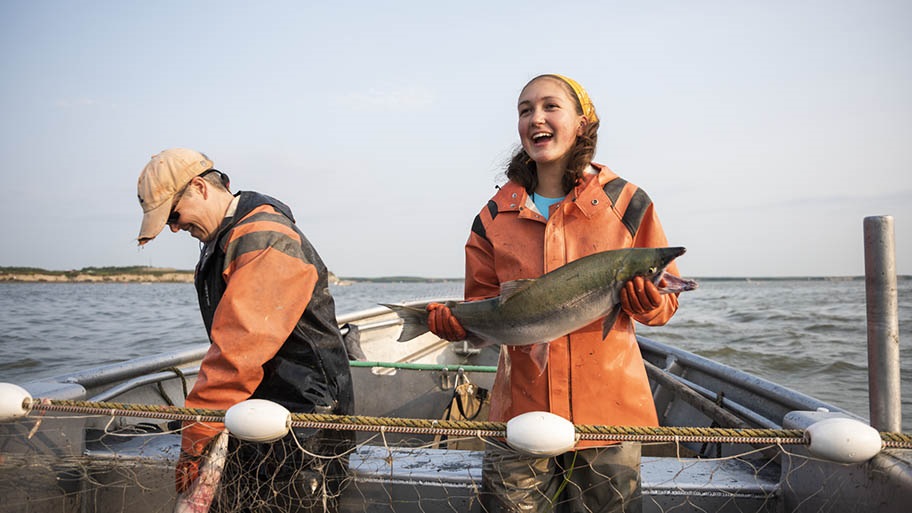December 2019
For Rich Wheeler, husband, father of three and lifelong fisherman, it all started twenty-one years ago during the summer he worked as a deckhand fishing for salmon in Alaska. The boats. The people. The summers spent at sea. Wheeler immediately fell in love with life on the water.
The father of his then girlfriend, now wife, worked as a longline fisherman out of the Ballard docks in Seattle, Washington. Wheeler followed in his father-in-law's footsteps and spent most of the last two decades fishing for halibut and black cod in the North Pacific. When Wheeler started looking for a place he could establish his own fishing operation, he turned north to the rich salmon runs of Alaska. A few years ago, he purchased a 32-foot fiberglass boat, the Ms. CamiLou, and now makes a living gillnetting for salmon in Prince William Sound and along the Copper River in southcentral Alaska.
It was this opportunity that drew him back to Alaska's salmon, and opportunity is why he plans to stay.
“This is the best managed fishery in the world”

Supported Since Statehood
Salmon has been synonymous with Alaska since time immemorial. Indigenous people relied on salmon for food, and Alaska’s abundant fish stocks were a primary reason behind the United States' 1867 purchase of the territory from Russia.
Two years after that transaction, the state's first cannery opened. By the turn of the century, the state had 59 canneries in operation and by 1920 that number mushroomed to 160. Fishing was largely unregulated at the time, and catches expanded rapidly for the first few decades of the twentieth century, peaking in 1936 with a catch of 130 million salmon. But then catches started to drop, in part due to loose federal management and a lack of understanding of fisheries science.
Even with declining catch, salmon fishing was the largest industry in territorial Alaska, generating about 80% of tax revenue. When a delegation of Alaskans drafted a constitution during the push for statehood in the 1950s, salmon was a centrepiece of the conversation - delegates wrote requirements for a sustainable salmon fishery into the constitution. When oversight of the industry shifted from federal authority to the state, two distinct changes were made. First, management was decentralised, and area biologists were staffed in regions across Alaska. Second, the biologists were given the authority to make real-time decisions to address in-season changes.

Management measuring salmon on the dock at Bristol Bay
Science rules the day
Those area biologists are people like Tim Sands, who has managed salmon in Bristol Bay’s Nushagak and Togiak districts since 2000. Over the last twenty years, Sands says the basics of salmon management have remained the same. Biologists determine how many salmon need to swim upriver and spawn to ensure there will be a robust salmon population born the next year. Scientists call this type of management escapement.To guarantee escapement goals are met, field staff spend summers sitting in towers looking down into rivers and counting salmon that swim past. Or, in the case of murky water, using sonar to count salmon swimming upstream. Those staff then pass the numbers up to Sands, who can make day-to-day decisions on whether fishing will be allowed or suspended. The specific number of salmon that must escape upriver to spawn and ensure a healthy population is based on decades of monitoring and data. "It’s generally pretty rigorous science that rules the day," Sands says.
It’s hard to overstate the importance of salmon to communities in Alaska like Bristol Bay. Sockeye salmon, which is the most valuable of the five salmon species in the bay, generate over $300 million in revenue for the area annually. Locals spend their summers catching and preserving salmon so they will have food to eat over the winter. Despite these high stakes, Sands says the vast majority of salmon fishermen support escapement goals, even when it means they miss out on some days of fishing.
For example, when Sands shut down salmon harvest in one river over the 2019 summer, he got a lot of phone calls, but not a single one of them was a complaint. Fishermen were simply calling in to ask about the status of salmon populations and when fishing might open up again.
“I think, at least for Bristol Bay, our escapement-based management is kind of the example worldwide for sustainable fisheries management”
Certified Sustainable
In 2000, shortly after Rich Wheeler’s first summer commercial fishing and the same year Tim Sands started managing salmon harvest, Alaska’s salmon industry became the first fishery in the United States to be certified sustainable to the MSC Fisheries Standard.
To meet the Standard, independent bodies audit fisheries, evaluating whether there are enough fish for harvesting to continue indefinitely, if impacts on the ecosystem are minimised, and if the fisheries are well-managed and able to adapt to changing environmental conditions. Once certified sustainable, fish caught and sold can be marked with the MSC blue label. This way consumers around the world can tell the fish is wild and sustainably caught.
At time of writing, about 95% of salmon harvested in Alaska is MSC certified, and that certification has become a critical economic driver for the fishery, says Julie Decker, executive director of the Alaska Fisheries Development Foundation. "Folks, I think, recognise the importance in the marketplace of telling our sustainability story as Alaskans," Decker says.

Fisher Emily Taylor with fresh catch
The Next Generation
Rich Wheeler always approached fishing with an ecologically conscious mindset, but having children really drove home the importance of sustainability for him. Wheeler has one son and two daughters, and the whole family spends summers together on the Ms. CamiLou. Wheeler expects his children to work on the boat at least through college and use their share of the wages to pay their way through school. Ensuring there are enough salmon around to make fishing a possibility for his kids in the future is important to him.
When Wheeler learned the MSC certification was a badge consumers could use to guarantee sustainable fishing practices, he aligned himself with the organisation. "It’s kind of the gold standard in third party auditing," Wheeler says.
The MSC certification helps ensure salmon will be around every summer for Wheeler, his family, and the thousands of other fishermen across Alaska. For them, salmon is more than just dinner or a paycheck. "This is a way of life for us," Wheeler says.

